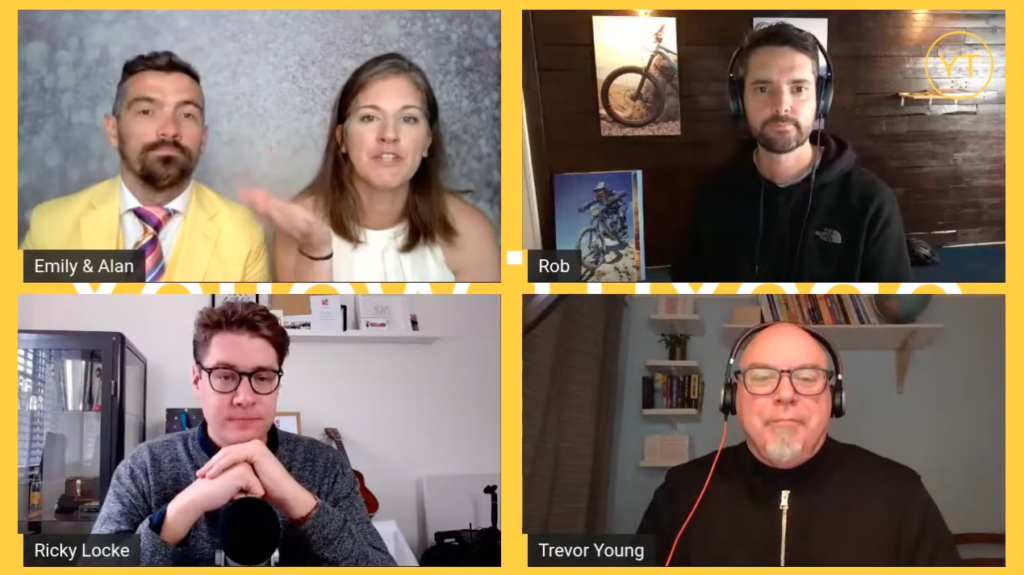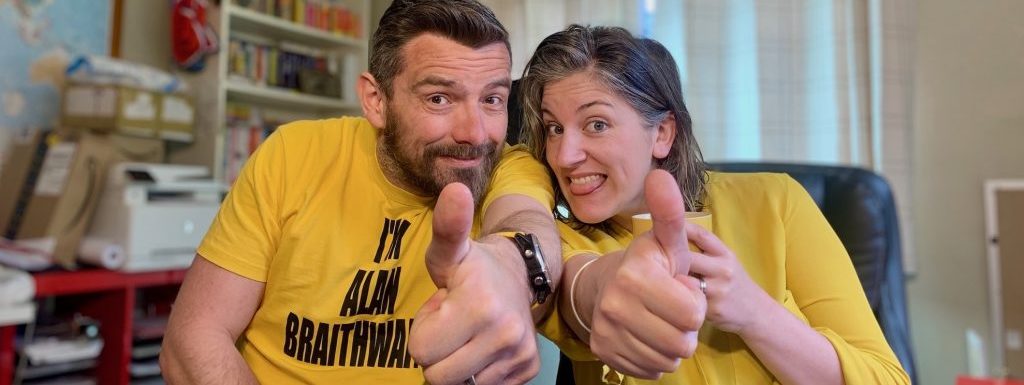
First we had the blog, which gave individuals the ability to publish their own online publication … for free!
Of course, blogging technology has improved immensely from those early days 20+ years ago, in turn giving businesses and individuals a terrific platform from which to build an audience directly.
Then podcasting took off. Slowly at first, as it was pretty clunky early on to not only record and publish podcasts, but also for people to access and listen to the recordings. But things improved for both the producer and the listener.
Today, while there’s still a bit of tech involved, the ability for anyone to create their own online radio show and grow a global audience is very real.
Video too has come in leaps and bounds over the years, but perhaps the biggest leap forward with the format has been … 🥁 … LIVE STREAMING.
Live streaming spells O.P.P.O.R.T.U.N.I.T.Y. for entrepreneurs, leaders and changemakers wanting to increase their profile and credibility in the global marketplace.
But not just any live streaming. That’s been with us for a while now – banging out a live video via Facebook, Instagram, Twitter et al can be incredibly powerful, and is at the fingertips of anyone with a smartphone.
Just ask Mitch Jackson – aka ‘The Streaming Lawyer – who was recently my guest on the Reputation Revolution podcast.
But now, we can take things up a notch or three by creating our own live online TV shows using technology such as StreamYard, Restream and BeLive.
Essentially, these are software products that allow you to live stream – or multicast – via a number of platforms at once – for example: LinkedIn, Facebook, Twitter and YouTube. The idea being you can reach more people at the one time.
But perhaps the biggest advantage for live streaming is that people can interact with you in real-time. It’s this interaction – plus the fact live streaming can be a bit raw from a presentation perspective, even if your production is top-notch – that really appeals to viewers.
Of course, interacting with viewers while you’re also presenting a show adds a layer of complexity to the production, but if you’re serious about live streaming, cost-effective technology is available to help you overcome this challenge.
Okay, let’s now look at a couple of examples of savvy entrepreneurs who are building their brands (and their respective audiences) through live streaming.
The Yellow Magic Hour

The screenshot above was taken from a terrific live streamed show I appeared on last year along with Rob Hancill, from Rob Rides EMTB, who has built a YouTube channel with 47,000 subscribers, plus magician Ricky Locke.
The Yellow Magic Hour is the brainchild of Southampton’s Emily and Alan Braithwaite, who run the digital agency, Yellow Tuxedo.
This particular episode was Emily and Alan’s first one, and they did a brilliant job producing and hosting it at the same time. The use of Ricky as entertainment between the two interviews was inspired, and helped create a live video show that was both fun and informative.
Emily and Alan have since gone on to produce five more episodes.
Time Out with Tristan White
Meanwhile, workplace culture and personal leadership expert, Tristan White, spent a good chunk of 2020 connecting with his audience via a live streamed daily huddle called Time Out.
In all, Tristan recorded over 140 live streams under the Time Out banner; as he got familiar with the technology, he started broadcasting via a bunch of channels, including Facebook, YouTube, LinkedIn and Twitter.
Most of the shows were solo efforts, but he started including interviews towards the end, including one with renowned author, Seth Godin.
(Check out Tristan’s live streams here)
Meanwhile, I caught up with Ian Anderson Gray to dig deeper into how entrepreneurs and professional experts can leverage the power of live streaming to build thought leadership.
Ian is founder of the Confident Live Marketing Academy and host of the Confident Live Marketing podcast. Some of the topics we covered in the interview included:
- Why thought leaders and entrepreneurs should get into live streaming
- Using live video to overcome the ‘curse’ of perfectionism
- How continuing to show up live and getting over his fear has changed Ian’s life
- Some super simple tips to overcome barriers to getting started
- Ian’s favourite ‘multi-streaming’ tools and microphones
- What to do before and after you go live, for optimal engagement
You can listen to the full interview with Ian here –
Okay, so what do we know?
- Live streaming technology is readily available and very affordable (I remember once staging a live streamed event many years ago and it cost $25,000 or something ridiculous. Today, the cost would be a fraction of that to do it well).
- Live streaming is a powerful format for entrepreneurs, leaders and changemakers wanting to build an audience, grow their influence and create more impact in the world (or the marketplace, depending on your goals!).
- Live streaming is particularly useful for business and community leaders wanting to communicate authentically and directly with people (Jacinda Ardern is brilliant at this).
If you’ve been putting off using live video as part of your business and engagement strategy, maybe this is the year to start experimenting with the medium!



Leave a Reply